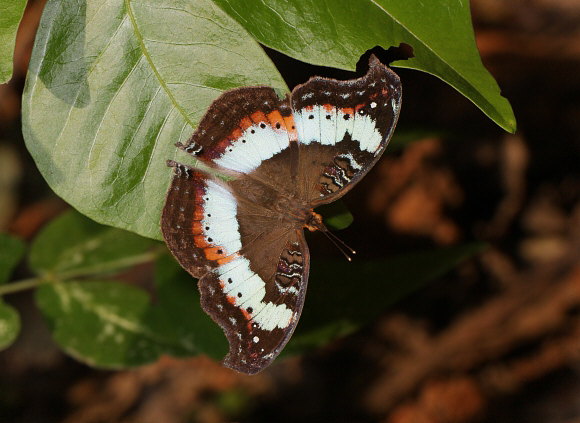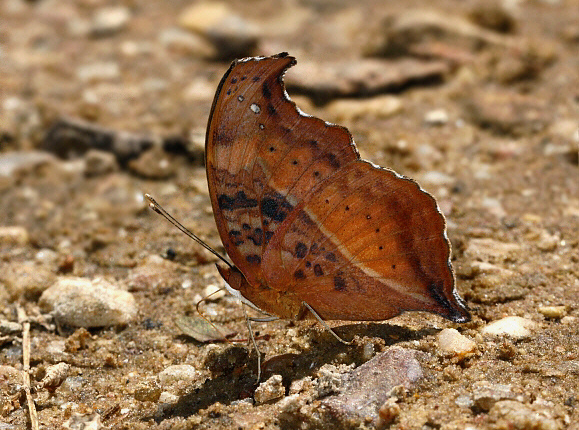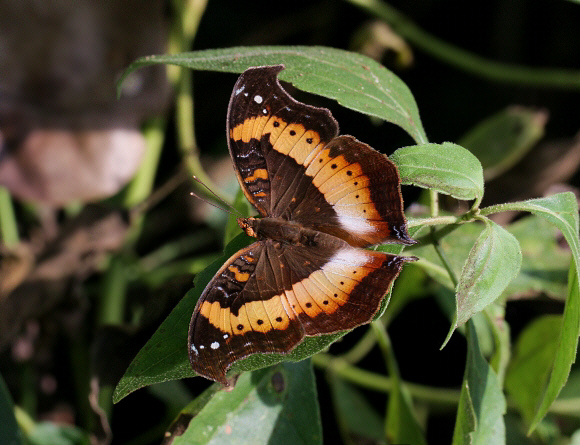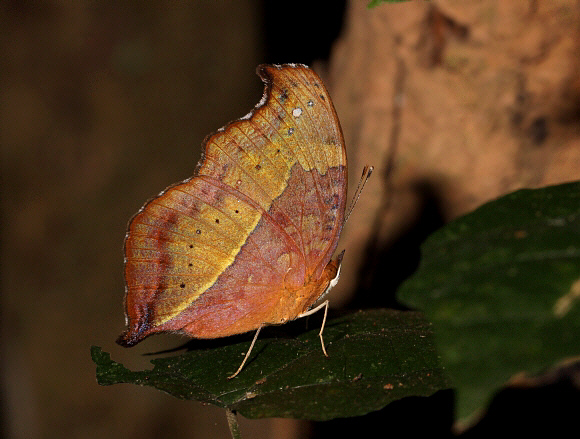
Introduction
The genus Precis is closely allied to Junonia and includes several species that were formerly placed within that genus.
There are 20 currently recognised Precis species of which 14 are found exclusively on the African mainland. A further 2 are endemic to Madagascar. The remaining 3 are found in south-east Asia.
Precis pelarga is found from Senegal to Congo and Burundi. In Uganda, Kenya, Mozambique and Zimbabwe it is replaced by P. actia, which was formerly considered to be a subspecies of pelarga.

The Fashion Commodore is seasonally polymorphic – the wet season form has creamy-orange bands on the upperside, and a variegated underside; while the dry season form has pale bluish-white bands above, a cryptic “dead-leaf” underside, and strongly falcate forewings.
Habitats
This species is found in open forest habitats, savannah / woodland mosaics, botanical gardens, and is a common butterfly in city gardens in some parts of its range. It occurs at altitudes between sea level and at least 800m.

Lifecycle
The larval foodplants include Solenostemon, Coleus, and other Lamiaceae.

Adult behaviour
The butterflies are usually found singly, but when hill-topping several can be seen within a limited area, searching for mates. Males perch with wings half open on bushes or other low foliage to await passing females, and fly up instantly to investigate any passing butterfly.
In cool or overcast conditions both sexes will bask with wings outspread on foliage or on the ground. In hot sunny conditions, males can be found mud-puddling, at which time they hold their wings erect.
Both sexes are fond of nectaring at Tridax and other flowers, where they often feed in company with other Precis and Junonia species.

